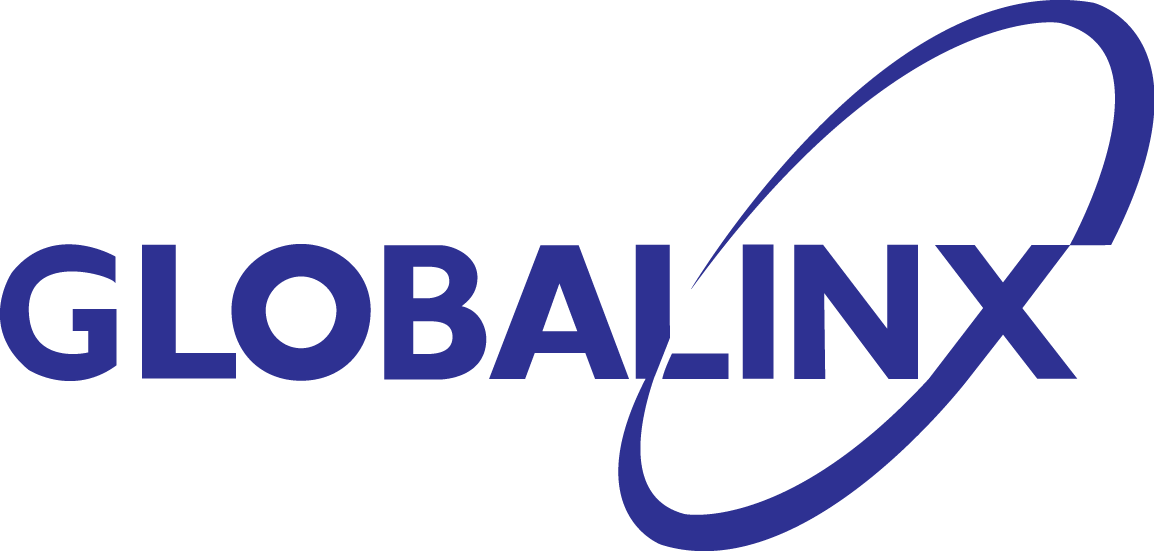Building a Leadership Development program can be quite a challenge for an HR professional in any organization.
Where do you start? What do you need to focus on and how can you measure the results? This 5-Step Process should help:
Step 1) Conduct Leadership Assessment
Organizational View: Engagement
Engagement results can give an overall view of leadership level in the organization, and might look like this (right):
In this case, there were 40 questions in total, out of which 16 reflect Leadership. This kind of assessment gives an overall view of leadership by Business Unit. It can also be broken down to departmental level, if that was part of the original demographic.
However, it isn’t intended to be an actual individual leadership assessment. For that, 360 degree feedback is very helpful.
Individual View: 60 Feedback
Individual 360 Feedback survey results are made up of inputs from subordinates, peers/colleagues and the Manager’s manager.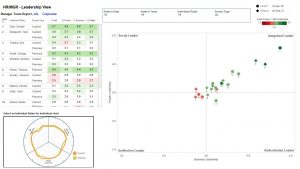
This kind of survey gives a good indication of how other people see this manager’s current performance as a leader, and can help to identify areas where the manager can improve.
HR professionals can also see the combined results for all managers in the organization.
Personal View: Leadership Profiling
This is a personal self-assessment, done by the manager or as a 360, and gives an insight into the individual Manager’s “Leadership Focus” and “Leadership Profile.”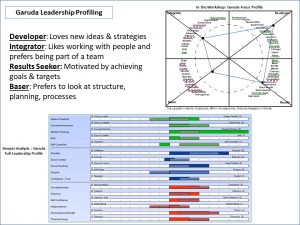
This kind of Profiling is very helpful when working with a Coach, who can discuss the results individually with the Manager, and contributes to the “Self-Leadership” of the manager.
It also helps determine leadership potential vs. a global benchmark and job/role fit for optimal performance. Note: this graphic shows the Garuda profiling tool.
Taken together, these assessments will give valuable input regarding the level of organizational and individual leadership, and will help you to design action plans for improving leadership at all levels in your organization.
Step 2) Link to Performance
Comparing the Leadership Index with performance will give you valuable insights into how leadership and performance are related in your organization.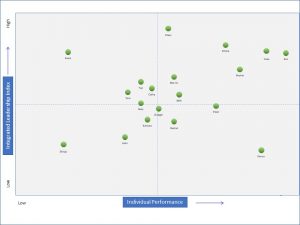
The goal is to get as many managers as possible moving towards the top right – great leadership and great performance (i.e., appraisal results).
In this example, most of the Managers are in the center, which is fairly typical. However, there are some “outliers.” One manager has a good Leadership Index but relatively poor Performance results, and another has good Performance results but a low Leadership Index. In these cases you may need to dig deeper to understand the reasons behind this.
Step 3) Conduct Gap Analysis
A gap analysis has two important parts: Where Leadership is now, and where you would like it to be. This can be both at an organizational level and an individual manager level.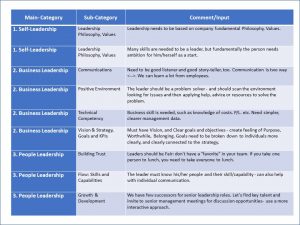
Some companies have a clear Leadership Philosophy based on company values, backed up by a Leadership Competency matrix. This makes it easier to decide where you would like to be for Leadership.
If you don’t have such a system, then you can begin by interviewing senior management to get their view on the current leadership level, and where it needs to be. Here is an example (right):
Step 4) Choose Solutions
There is a wide range of solutions available for Leadership Development, and naturally these depend on your needs and goals. However, this summary list from Global Leadership should help you to get started:
Integrated Leadership Workshop: Combination of Self, People, & Business Leadership
Leadership Coaching: Helping leaders achieve their goals and develop their capabilities through personal coaching.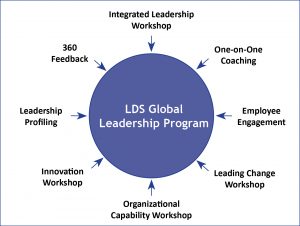
Innovation Workshop: Developing multiple innovative business concepts through ideation.
Change leadership Workshop: Improving the capability to drive change throughout the organization.
Essential Business Communication skills and techniques, e.g., Presentation Skills, Facilitation Skills, Negotiation Skills, Project Management, Business Analysis, Logical Thinking, Business Analysis Skills, Stakeholder Management
Step 5) Implement Action Plan, Measure Outcomes
Now you have an assessment, a goal and a plan. Perhaps the plan includes only Integrated Leadership workshops, or maybe it includes all the above ideas, plus other ones not listed. 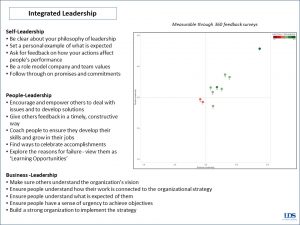
Here’s an example road map (right), where various modules are delivered according to the level and experience of the individual.
These could range from 3 day intensive workshops to half-day sessions delivered bi-monthly over the course of a year
Of course, you can measure the results of your plan through Employee Engagement, plus 360 feedback surveys.
And don’t forget to link it all to performance and business results – this is a crucial step.
And, it’s best to support these workshops with individual, one-on-one coaching. Do this for high performers as well as those who have performance issues. Why also provide coaching for high-performers? It may seem that only lower performers need this kind of intervention, but in our experience high-performers often discuss issues with their coach that they are reluctant to bring up with their direct manager. So, please continue their coaching program – or start one if you don’t have one now!
Of course, workshops and coaching are no substitutes for actual leadership experience, but these can be valuable tools in helping to create “highly-engaged and high-performing organizations that achieve extraordinary results.”
Need more information?
We hope this article has been helpful, but if you have any questions or would like to know more, please do contact us. In the meantime, here are some other articles that you may find interesting:
Implementing a Leadership Program


